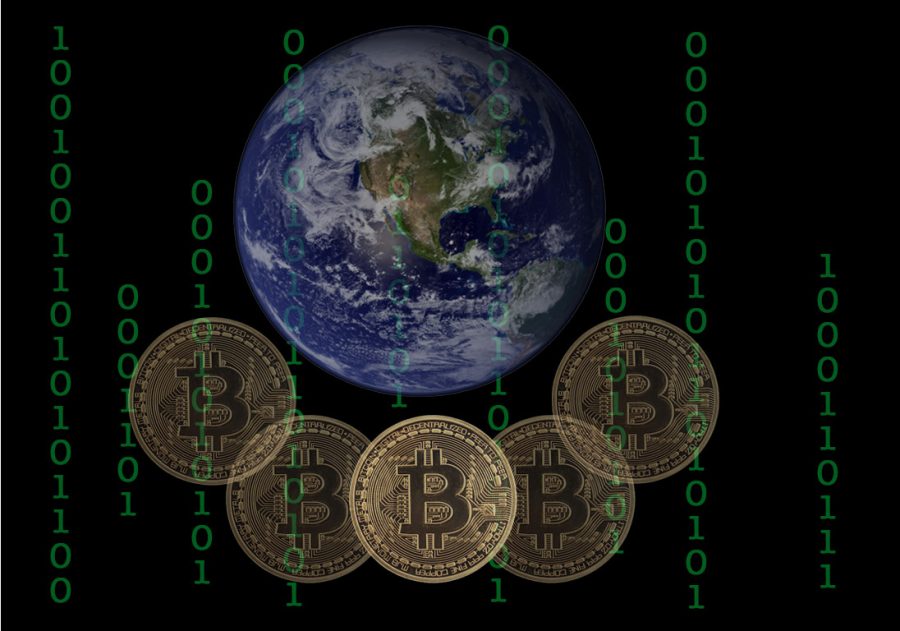Thanks to Bitcoin taking the world by storm, the way in which we view money has evolved. Many people are rushing to get on the cryptocurrency craze, and because of this, hundreds of other cryptocurrencies have emerged to compete for people’s attention, and money. In fact, as of this year, there are over 1,000 different cryptocurrencies, and that number is only going to continue growing. However, although most have at least heard about Bitcoin by now, few know how to get started.
Bitcoin and other cryptocurrencies, for all intents and purposes, work just like the dollars you have in your purse or wallet. In fact, an easy way to think about cryptocurrencies, is the same way one would think about online shopping. Simply follow the instructions when entering your payment information and once you hit send, the funds are transferred.
The main difference between cryptocurrency and fiat money, or legal government tender, is that cryptocurrency is completely decentralized, which is a fancy way of saying that it doesn’t go through any bank or government. This means that the money simply travels from you, to whoever you’re sending the money to and vice versa, with no need of a middle man. This is possible thanks to the use of a blockchain, which is a public ledger that anyone with a computer and internet can access, but a bit more on that later.
The first thing needed to get started is a wallet specifically for cryptocurrency. These wallets are currency specific, meaning don’t use a Bitcoin wallet for an Ethereum wallet, as you would just be losing your hard earned currency, forever. Unlike real wallets, these wallets don’t actually hold any currency, but just gives you a window to view your records and transactions, usually through an app or website. Each wallet has its own unique address, called a hash, which is used to send and receive funds from wallet to wallet. However, before sending any of your currency to another person or business, make sure to double and triple check you’re sending the funds to the proper wallet, as all transactions are permanent, even if you send it to the wrong address, meaning you won’t be getting those funds back.
The two main ways to get cryptocurrency is through either trade, or mining.
Trading is done through exchanges, and unlike a traditional stock market, these exchanges are global and allow people to trade 24/7. Another difference being that in a stock market you can invest in a tangible company, while that’s not the case for cryptocurrency. Furthermore, exchanges are generally not regulated, so investing comes with an added risk. For these reason, the prices of these currencies are always in flux and can gain or drop in value “virtually” overnight, as evident with Bitcoin dropping to 8k recently, down from the 17k it was priced at in January. However, although the price dropped so much for Bitcoin, it is still the leading cryptocurrency currently available.
The second way to get cryptocurrency is through mining. This is done with dedicated computer hardware such as a CPU, GPU or an ASIC. Central Processing Unit is the “brains” of a computer, Graphics Processing Unit is used to render images, animation or video on a computer screen and Application-Specific Integrated Circuit is a chip used for a specific purpose, in this case, to mine cryptocurrencies.
But each hardware has their pros and cons. The hardware is used to make complicated calculations that verify all transactions added to the blockchain, where all cryptocurrency transactions can be found. The process that can take roughly 10 minutes. Each time a miner solves one of these calculations, a new block is added to the public ledger and a small transaction fee is added to the miner’s wallet. This process is what creates new currencies, hence the term “mining.”
People who opt for this route earn coins depending on how much hardware they invest. For example, a single GPU can cost $300 or more and you’ll be earning coins depending on how many calculations the GPU can procure. More hardware means higher payout, but more money invested from the beginning. Miners generally break even a few months after starting, although this depends on the coin being mined.
Finally, some security tips. The fastest way to get an extra layer of protection on any online sensitive information is a two-factor authentication. This is a time sensitive code, usually obtained through a phone app, required to enter whatever you’re trying to access, on top of your password. The code changes after a few minutes and a new one is sent to your phone when needed, making it harder for someone else to hack into your wallet.
The use of passphrases and a password manager is also helpful. Passphrase are similar to passwords, but harder for hackers to crack as they are random words put together to create a “phrase.” The more words in your passphrase, the harder it is to crack. Password managers allow you to store credentials in one place with a master username and password, so you don’t have to remember every credential you use. Also using different usernames and passwords for everything you use online makes is recommended, since if a hacker manages to get one of your credentials, it won’t be the same for your other logins.



